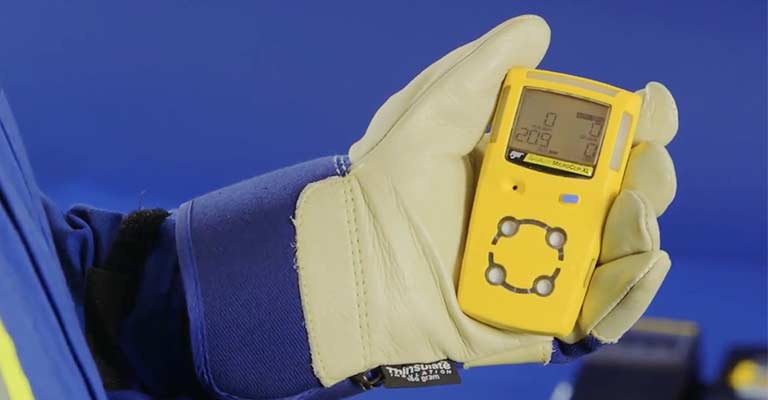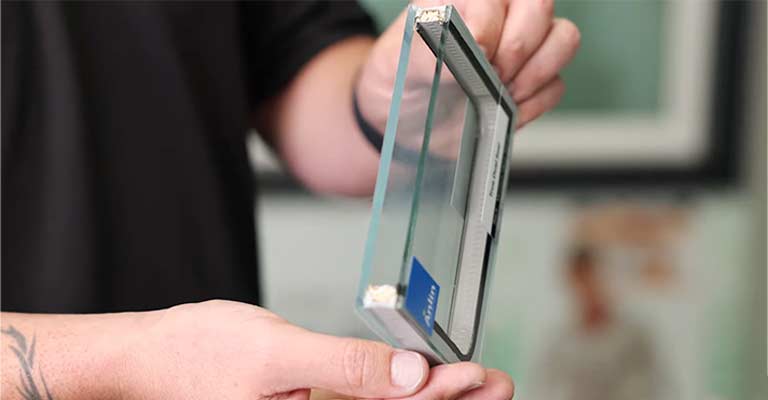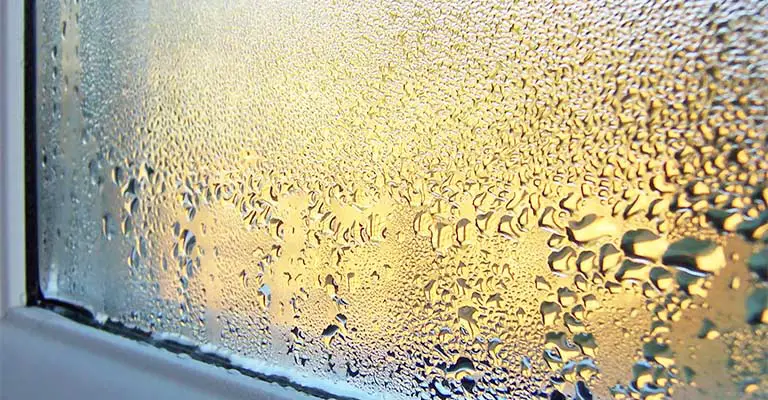If you’re a homeowner considering new windows, you’ll face the decision of whether to choose windows filled with argon.
Argon-filled windows are better at saving energy compared to windows filled with regular air. This means they can help reduce your home’s utility costs in the long run.
To make the best choice, it’s important to understand what argon is, why it’s commonly used in windows, and how argon-filled windows stack up against other window options.
How Do I Know If My Windows Have Argon Gas?

Argon gas is often used as a filler between the panes of double or triple-pane windows to improve insulation.
While it’s not always easy to visually confirm the presence of argon gas, there are a few methods you can use:
Check The Window Label
The easiest and most reliable way to determine if your windows have argon gas is to check the window label.
Window manufacturers typically provide information about the features of the windows on a label or etching on the glass. Look for terms like “argon-filled” or “gas-filled” on the label.
Contact The Manufacturer
If you don’t have access to the window label or the information is not clear, you can contact the manufacturer.
Provide them with the serial number or any other identifying information, and they should be able to tell you if argon gas was used in the window.
Use A Gas Detector

There are handheld gas detectors available that can identify the presence of certain gases, including argon.
However, these detectors may not be as accurate as checking the window label or contacting the manufacturer.
Additionally, the gas concentration in the airspace between the window panes is relatively low, so detection might be challenging.
Look For A Spacer Bar
Double or triple-pane windows typically have a spacer bar between the panes. Some spacer bars have a desiccant (drying agent) material, and others may have indicators that change color if the gas escapes.
However, the absence of such features does not necessarily mean argon gas is not present.
Thermal Imaging
In some cases, thermal imaging may help you identify temperature differences between the panes of glass.
Argon-filled windows should exhibit different thermal properties than regular air-filled windows. However, this method may not be foolproof, and professional equipment may be required.
Low-E and Argon Gas Windows: Advantages

Low-emissivity (low-e) coatings, when combined with argon gas in windows, offer numerous advantages, making them a popular choice. Here are the key benefits of opting for low-e and argon gas windows:
Enhanced Insulation:
Windows featuring both low-e coatings and argon gas provide excellent insulation, resulting in higher R-values compared to windows without these technologies.
Year-Round Performance:
Whether it’s hot or cold outside, argon gas/low-e windows offer insulation in all climates, ensuring comfort throughout the year.
Safety:
Argon gas is safe for both people and the environment, making it a secure choice for window applications.
UV Light Blockage:
Low-e coatings effectively reflect ultraviolet light, reducing damage to furniture and flooring inside the house.
Noise Reduction:
Argon gas contributes to soundproofing, beneficial for homeowners in noisy areas.
Cost-Effective:
Argon, as a gas fill, is relatively inexpensive, making it a practical option for both homeowners and business owners.
Lower Utility Bills:
These windows can enhance the efficiency of a home’s HVAC system, leading to reduced utility costs over time.
Versatile Design Compatibility:
While argon is most effective in double-paned windows spaced 1/2 inch apart, it can be used with windows of various sizes and shapes, combined with low-e coatings.
Frost Prevention:
The insulating properties of argon help prevent frost buildup on windows during winter.
Increased Property Value:
Installing new, energy-efficient windows, especially those with low-e and argon gas, can significantly boost your home’s property value.
Enhanced Comfort:
Overall, low-e windows create a more comfortable indoor environment, ensuring a pleasant temperature for you and your family throughout the year.
How Long Does Argon Gas Last in Windows?

If your windows are of good quality, argon should last a long time in them. It’s normal for a bit of argon to slowly escape over time, but well-made windows can keep argon for 20 years or even more.
Even if only a little argon is left, it still works well as an insulator, and the windows should still do their job effectively.
If homeowners are worried about their windows, they can have a professional check to see if there’s still argon inside. If all the gas has leaked out, you might see fog or frost between the window layers.
Can Argon Gas Be Changed in Windows?
Experts who work with windows have a tool that can find out if there is gas in your windows and how much is there. If needed, they can also switch out the argon using special tools.
To put in new argon, they use the hole in the spacer. If the seal on the window is broken, it might need fixing or a new window. If not, the issue might happen again.
It’s a good idea to talk to a window professional to figure out how much argon is in your windows and what to do about it.
What Is Argon Gas?
Argon is a type of gas found in the air around us. It’s safe, doesn’t have a smell, and is not expensive. Because of these qualities, it is used for various things in industries.
You can find argon in things like light bulbs, the tires of fancy cars, windows, and even in SCUBA diving suits. It is also handy in a process called arc welding.
How Is Argon Gas Used in Window Construction?
Argon is used to fill the spaces between two or three layers of windows, which are known as double or triple paned windows. This filling process is called “gas fills.”
When making these windows, argon is put in through a small hole, and at the same time, any air is let out through another small hole in a spacer.
So, if you want to know if your windows have argon, you can check for these little holes.
Why Is Argon Gas Used in Windows?
Argon gas is great for windows because it doesn’t let heat pass through as easily as air does. This makes it an excellent insulator.
When windows have gas in them, it stops frost from forming at the bottom of the window when it’s cold.
Argon is one of two gases used in windows for this reason. The other gas is called krypton.
Is Argon Gas Safe?
Yes, argon is a gas that exists naturally, and it’s safe. It doesn’t harm the environment or the people in a home.
Even if the seal on a window breaks and argon leaks out, it won’t cause any damage. The gas goes away quickly in a place that is open and well-ventilated.
Why Is Argon Gas Used in Windows?
Argon gas does not conduct heat as well as air, so it’s an excellent insulator. Gas filled windows also prevent a buildup of frost at the bottom of the window during cold weather.
Argon is one of two types of gas that may be used in windows for this purpose; the other gas is krypton.
Final Words
You don’t need to worry about closing window blinds to block the summer heat or adding weather stripping in winter to keep the warmth inside.
With argon gas fills and effective insulation, your home will naturally stay sealed against the weather, providing a comfortable environment throughout the year.







